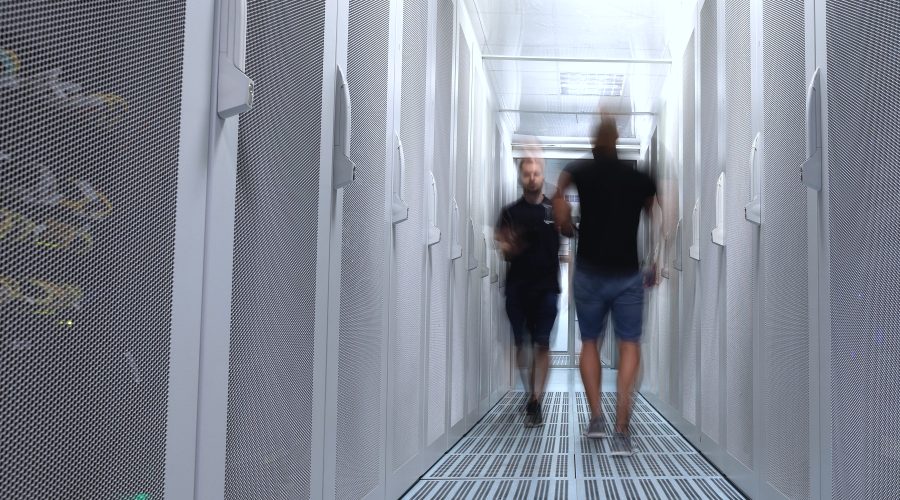vSAN Storage As The Basis Of Our Cloud. Why Did We Decided For It?
Support for microservices, highly available NFS or building private clusters. This is just part of the reasons that led us at MasterDC to deploy software-defined storage on vSAN for the cloud. What else will the new architecture provide to customers?

Requirements for the availability of critical applications are increasing and there is a growing interest in disaster recovery or microservices based not only on Kubernetes. At MasterDC, we were therefore wondering what steps our cloud platform would take and whether we would again choose a traditional architecture based on Dell EMC PowerEdge servers and disk arrays.
HCI is one way to provide better agile support for native cloud applications and more efficient data replication. Hyperconverged infrastructure integrates compute power, storage and some network elements into a single system and allows them to be managed from a single portal.
Cloud architects from the VMware team also tested VMware vSAN, a software-defined storage tool, for this purpose. “We needed to debug all the situations that could arise, even the potential ones. First of all, we had to be sure that we could effectively use vSAN for several robust clusters whose performance will support a number of customers,” says Jan Hrnčíř, VMware teamleader and solution architect at MasterDC.
Our Cloud Platform Enters The HCI path
The implementation was preceded by a series of training sessions at VMware and consultations with experts who had practical experience with vSAN clusters. “HCI is not some short-term trend. Major European companies are already using it for their hybrid infrastructure. It’s logical because it provides several benefits, from easy scaling to practical maintenance,” Hrnčíř adds.
Speaking of VMware vSAN, it might be a good idea to set the record straight on what the tool is all about. Software is very often associated with hyperconverged infrastructure, and some of its features actually enable it.
In our case, software-defined storage vSAN replaces the original storage in the form of disk arrays. There are several reasons for this decision. But the most important ones include data replication across multiple infrastructure nodes, minimizing latency, and the ability to scale the system more flexibly.
Impact Of Modernisation On Services Provided
Storage vSAN delivers the same high level of service as disk arrays, so current customers experience no change after the upgrade and migration. They can look forward to a better quality of service, for example in terms of latency for disk access itself.
One of the benefits is also an upgrade of all hardware, that means especially new and better CPUs. Everything will run on components certified by VMware directly for vSAN. The base will be, as before, machines from Dell EMC.
The level of availability can usually be even higher, as it is entirely at the provider’s control. The provider determines the “fault tolerance” (the number of nodes that can be lost without negatively affecting the availability of the cluster and therefore the services) and the RAID level of the entire cluster according to its own specifications.
The vSAN function allows to perform node updates and maintenance without negatively impacting the rest of the system. The system can verify the presence of replicas of specific data and create them as needed so that a node update or replacement does not affect the rest of the cluster. Beyond this, however, the new cloud architecture also brings new features that customers can look forward to.
Behind the whole modernization is an effort to provide customers support for new functionalities, to orient MasterDC services more towards containerization, Kubernetes and microservices in general, which are experiencing a boom and their popularity will grow thanks to easy management.
In addition, we will be able to provide more reliable networked shared storage with the quality and performance required. NFS, the network file system, natively means SPOF for our infrastructure (single point of failure). Thanks to vSAN File Service, we can offer customers NFS/SMB with high availability, even those who do not use our cloud services. It can be used as permanent storage in Kubernetes, or as shared storage for some applications. Connection is done by default via NFSv3 NFS4.1, on Windows via Samba.
Customers will now be able to have a private vSAN cluster designed and built to their specifications. The cluster is suitable for the operation of a complete infrastructure, guaranteeing its high availability and efficient data replication. The size can reach up to tens of nodes. Thanks to it, customers can benefit from all the advantages of hyperconverged infrastructure – easy scaling, simple configuration and central management. In addition to design, we can manage the entire cluster for them.
vSAN Implementation In MasterDC
One vSAN cluster is already actively running in MasterDC, and the first part of the cloud infrastructure will be transferred during this year, probably during the summer months. The second one will follow in 2023.



